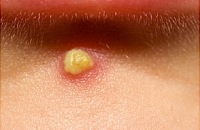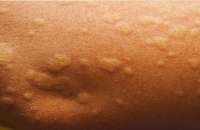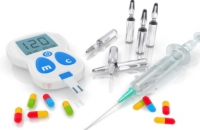A pustule is a bulging patch of skin that's full of a yellowish fluid called pus. It's basically a big pimple. Several conditions, ranging from something as common as acne to the once-deadly disease smallpox, can cause pustules.
They show up when you have some sort of infection your body is trying to fight it off with white blood cells. That can result in a mixture of infected fluid and dead white blood cells (pus).
When pus builds up under your skin or in a pore, it can cause a pustule.
Articles
About 20% of people get hives -- itchy red or skin-colored welts also known as urticaria. They’re often caused by an allergic reaction to a food or drug. Usually, they go away quickly.
For a small number of people, though, hives come back again and again, with no known cause. When new outbreaks happen almost every day for 6 weeks or more, it’s called chronic idiopathic urticaria (CIU).
Snacks get a bad rap. They’re blamed for everything from spoiling kids’ dinners to childhood obesity. Yet healthy snacks actually play a crucial role in helping kids get the nutrition they need.
These days, chances are good that you’ll spot someone sporting a fitness band or watch on their wrist wherever you go. Maybe you even have one of these activity trackers yourself.
So have you thought about getting them for your kids? Though they’ll have different goals than you or your adult friends, your children might be motivated to move more when they wear a tracker. (Just 15% of kids get the 60 minutes of daily exercise that they need.)
Try these tips to help your kids get the most from these gadgets.
Is drinking good for your health? Several recent studies have suggested that alcohol in moderation offers health benefits and may even help you live longer. Yet in 2014, the World Health Organization labeled alcohol as a carcinogen and said no amount is safe.
The question gained new relevance this month with the release of a sobering report that documents a significant rise in the number of people with drinking problems in the U.S. The problems were noted especially among women, minorities, and the elderly, as well as those with less education and lower incomes.
The major goal in treating diabetes is to minimize any elevation of blood sugar (glucose) without causing abnormally low levels of blood sugar. Type 1 diabetes is treated with insulin, exercise, and a diabetic diet. Type 2 diabetes is treated first with weight reduction, a diabetic diet, and exercise. When these measures fail to control the elevated blood sugars, oral medications are used. If oral medications are still insufficient, treatment with insulin is considered.






